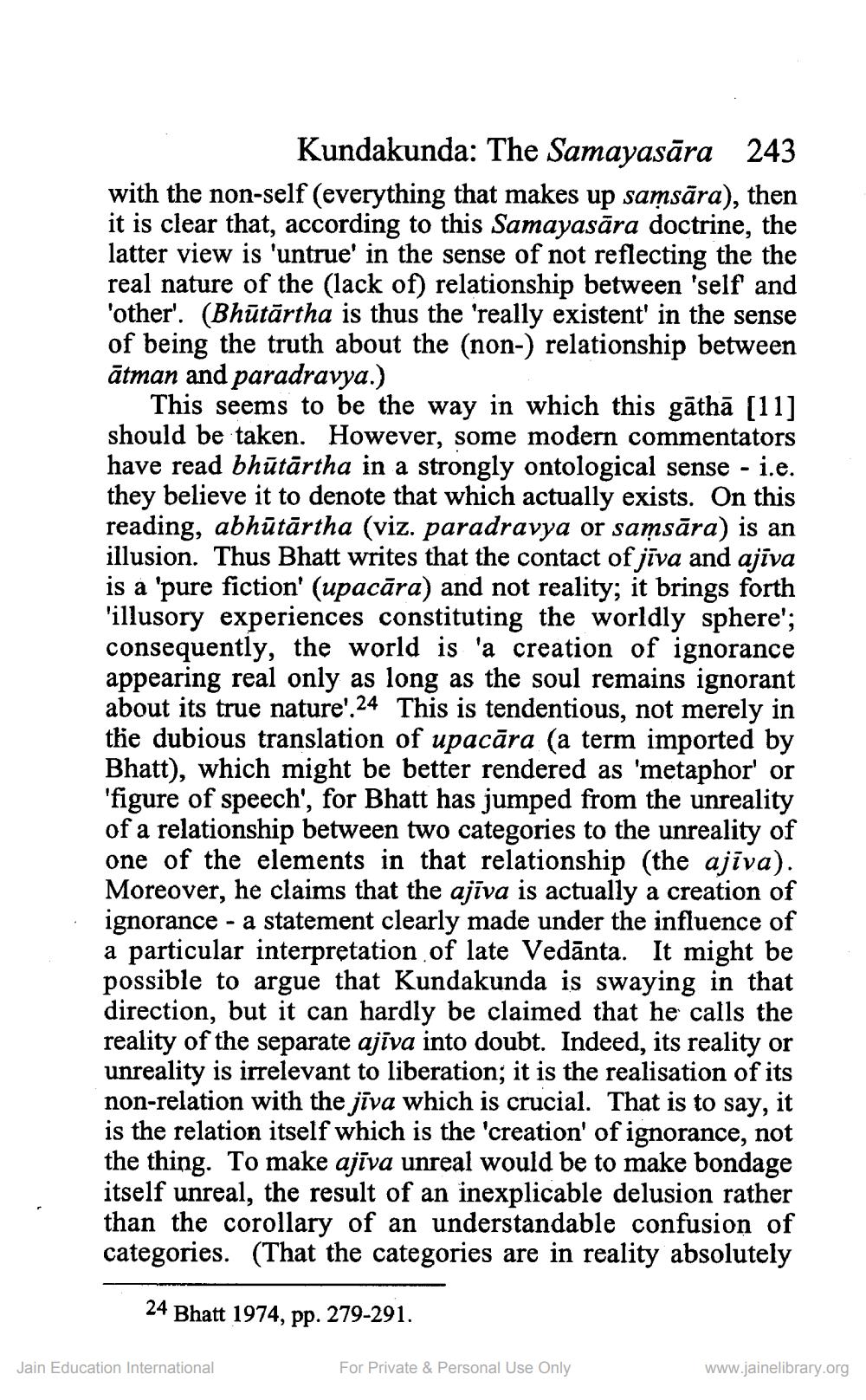________________
Kundakunda: The Samayasāra 243 with the non-self (everything that makes up samsāra), then it is clear that, according to this Samayasāra doctrine, the latter view is 'untrue' in the sense of not reflecting the the real nature of the lack of) relationship between 'self and 'other'. (Bhūtārtha is thus the 'really existent' in the sense of being the truth about the (non-) relationship between ātman and paradravya.)
This seems to be the way in which this gāthā [11] should be taken. However, some modern commentators have read bhūtārtha in a strongly ontological sense - i.e. they believe it to denote that which actually exists. On this reading, abhūtārtha (viz. paradravya or samsāra) is an illusion. Thus Bhatt writes that the contact of jīva and ajīva is a 'pure fiction' (upacāra) and not reality; it brings forth 'illusory experiences constituting the worldly sphere'; consequently, the world is 'a creation of ignorance appearing real only as long as the soul remains ignorant about its true nature'.24 This is tendentious, not merely in the dubious translation of upacāra (a term imported by Bhatt), which might be better rendered as 'metaphor' or 'figure of speech', for Bhatt has jumped from the unreality of a relationship between two categories to the unreality of one of the elements in that relationship (the ajīva). Moreover, he claims that the ajīva is actually a creation of ignorance - a statement clearly made under the influence of a particular interpretation of late Vedānta. It might be possible to argue that Kundakunda is swaying in that direction, but it can hardly be claimed that he calls the reality of the separate ajiva into doubt. Indeed, its reality or unreality is irrelevant to liberation; it is the realisation of its non-relation with the jīva which is crucial. That is to say, it is the relation itself which is the 'creation' of ignorance, not the thing. To make ajīva unreal would be to make bondage itself unreal, the result of an inexplicable delusion rather than the corollary of an understandable confusion of categories. (That the categories are in reality absolutely
24 Bhatt 1974, pp. 279-291.
Jain Education International
For Private & Personal Use Only
www.jainelibrary.org




